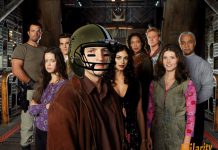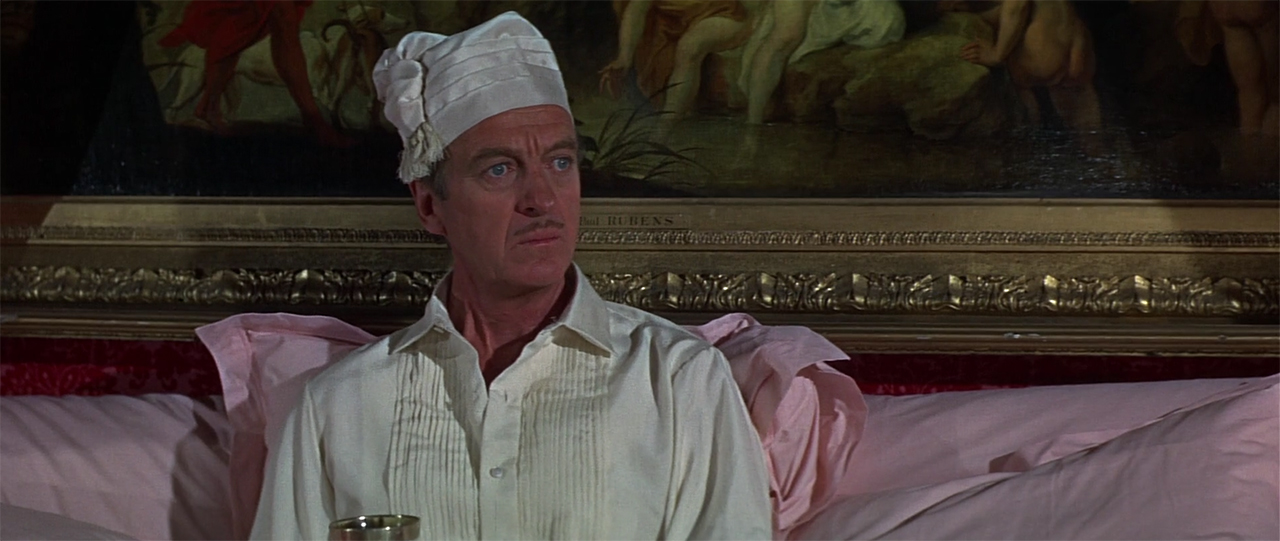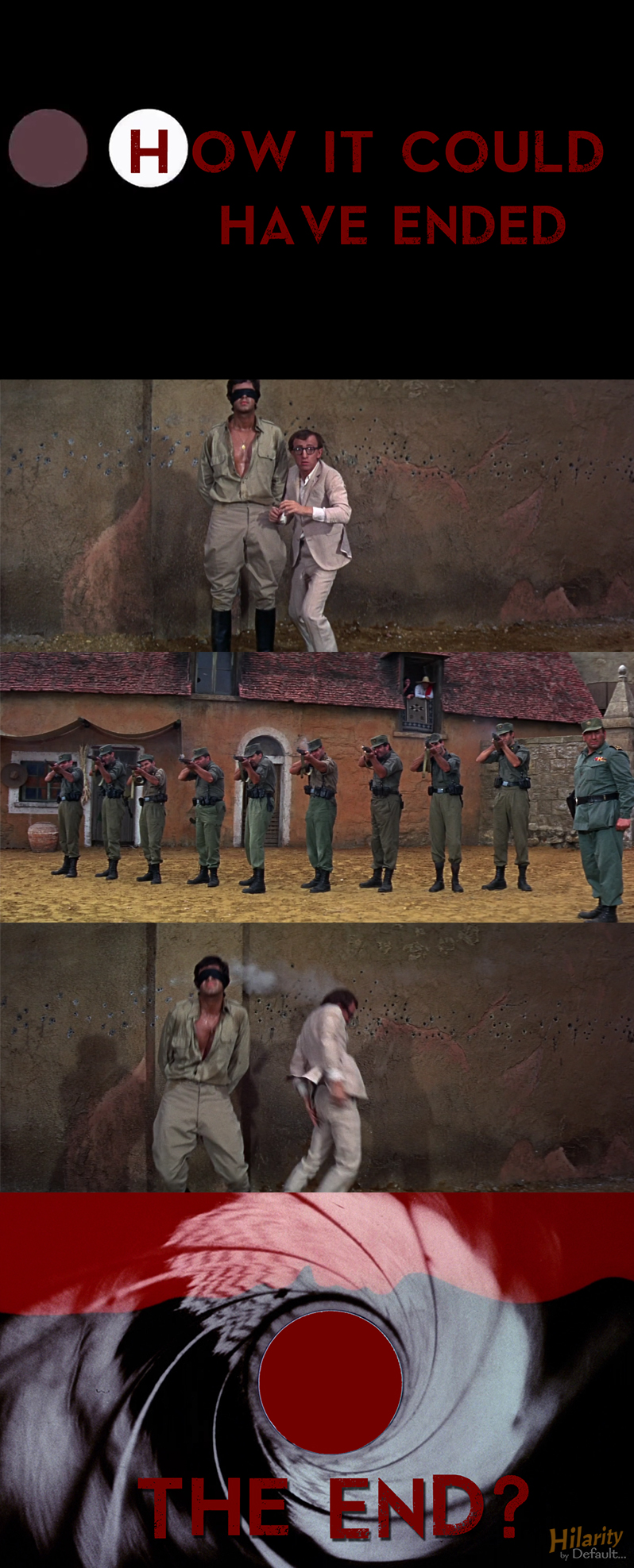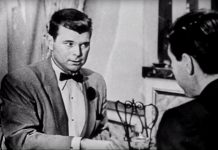Where does one begin with 1967’s Casino Royale? An unofficial spoof of the Sean Connery James Bond series “suggested” by the first 007 novel of the same name (which had already been filmed as a black & white television special in 1954), Casino Royale succeeds as neither a proper spoof or, for that matter, a proper film. If you were to mix every single stereotype of the 1960’s with a who’s who of the biggest stars of the time in a blender with a dash of powerful psychedelics, the resulting sludge, though colorful, would still be more consistent and coherent than what we got instead.
With dozens of directors and screenwriters alternating throughout the film’s production (many, to their luck, uncredited), maddening celebrity feuds, and the top-billed star, Peter Sellers, abandoning the picture halfway through, it isn’t the biggest surprise that it ended up being such a gigantic mess. In fact, it’s a damn cinematic miracle that the film was even completed and released. Yet, despite its troubles, there is an accidental brilliance that underlies the whole production. For all its faults, plot holes, and euphoric inconsistencies, Casino Royale has a certain charm, with some incredibly inventive set pieces and gags peaking through its constant barrage of inebriated excess.
Casino Royale (1967) |
As a kid, I loved the James Bond series. Having first seen Never Say Never Again on TV (the other major unofficial Bond film), I sought out the series on VHS and began watching them in order to the best of my ability. About the same time, I discovered other films from the era such as Blake Edwards’ comic masterpiece The Pink Panther (1963) starring David Niven and Peter Sellers. Both would lead me to other terrific films such as Niven’s The Guns of Navarone (1961) and Seller’s Dr. Strangelove (1964). You can imagine my surprise when on a visit to the library I happened across Casino Royale for the first time. A 007 film with David Niven as Bond which also starred Peter Sellers and Dr. No‘s Ursula Andress? How could it possibly go wrong?
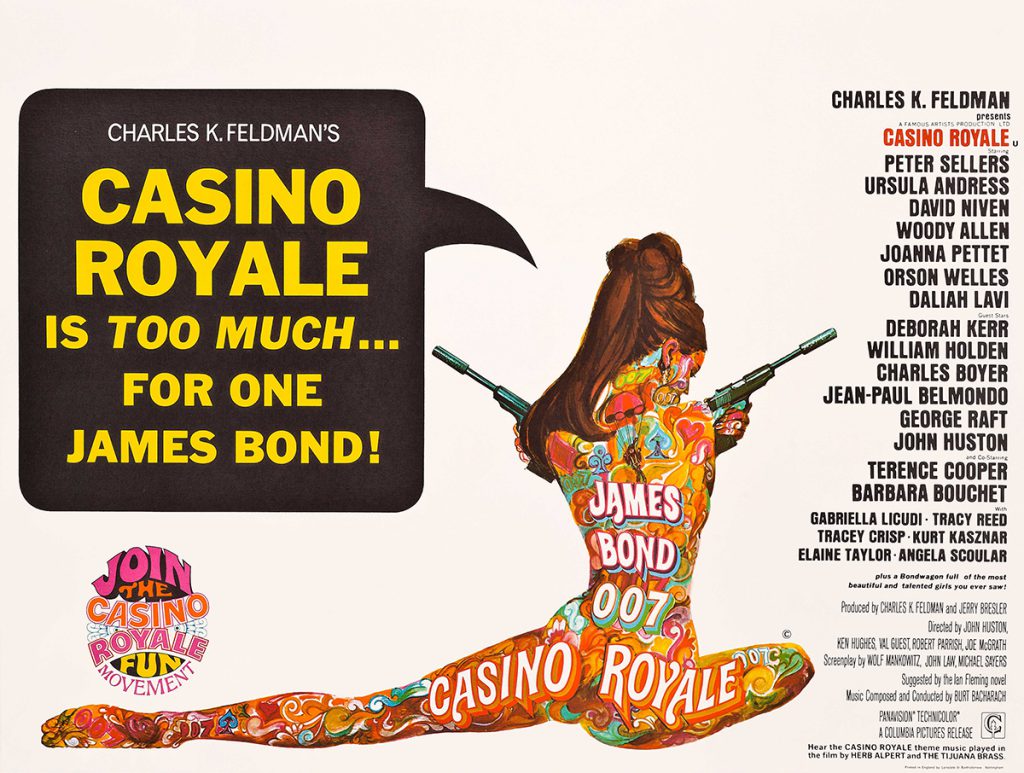
Having acquired the rights to Ian Fleming‘s novel after it had been filmed as a one-hour one off for the Climax TV show, producer Charles K. Feldman sought to make a deal with the producers of the Bond franchise to film Casino Royale as a faithful entry in the series with Connery in the role (going so far that it was heavily rumored that it would serve as the follow-up to Goldfinger). When talks dissolved, Feldman redefined his approach and decided to satirize the Bondmania that had since gripped the world. Partnering with Peter Sellers, high from his successes with The Pink Panther and its sequel, A Shot in the Dark, production on the film began albeit with a disagreement that would fracture the entire project. Sellers, aspiring to expand his range, reportedly wanted a more down-to-earth, serious approach (which is not surprising considering the brutality of Fleming’s novel). Flared tempers and film-production blackballing ensued ultimately causing Sellers to drop the project leaving Feldman to attempt a mad scramble to sustain the already expensive shoot. The end result, though admirably salvaged by at least five credited directors, would serve as a poster child for runaway productions and behind-the-scenes calamity bleeding through to every frame of a motion picture.
With that said, to simply state the coddled together plot of Casino Royale in a single paragraph would be a disservice. Not because of any hidden layers of depth or its intricate narrative but solely because, well, there isn’t one exactly. Instead, it’s a series of loosely (to the fullest definition of the term) connected sequences, each crazier and more kaleidoscopic than the last. What starts off as a standard, dry English comedy ends up becoming a hallucinatory hodgepodge of mind-bending insanity. By the time a UFO lands in London and Frankenstein’s monster is set loose, there is no point in questioning anything but the sanity of the makers behind this trip. If anything, Casino Royale is an experience rather than a story – perhaps one that is best indulged while under the influence of anything – especially a power outage.
Casino Royale opens with its own pre-credit sequence, a la every Bond film since From Russia with Love. So what’s it going to spoof? The deadly garroting watch from Russia? The far-fetched eye reflection and heroin flavored bananas from Goldfinger? The assassin faking his own funeral that he attends dressed as his widow before being thwarted by a jetpacking James Bond from Thunderball? Nope, it’s simply Peter Sellers dryly meeting Inspector Mathis (Duncan Macrae) in what looks like a French playground. No jokes. No explanation. Cut to the opening credits. What a promising start…
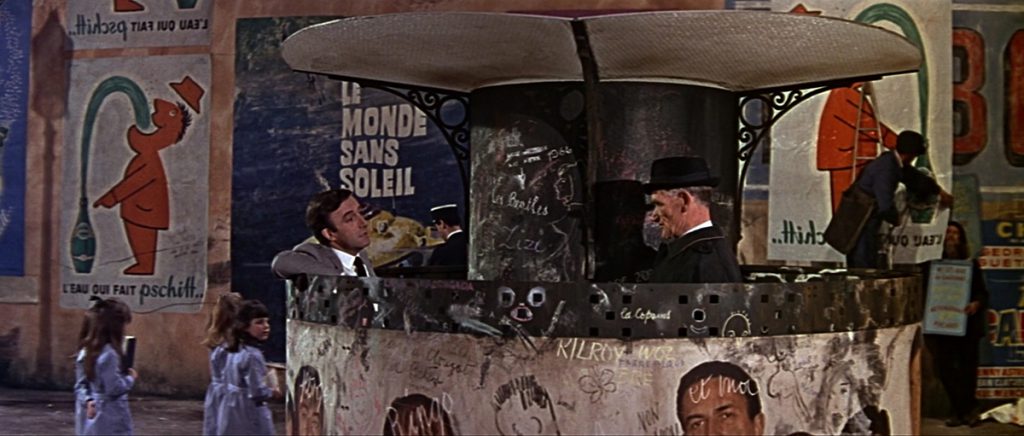
I wonder what our traditional pre-credit alternate title would be in this instance?
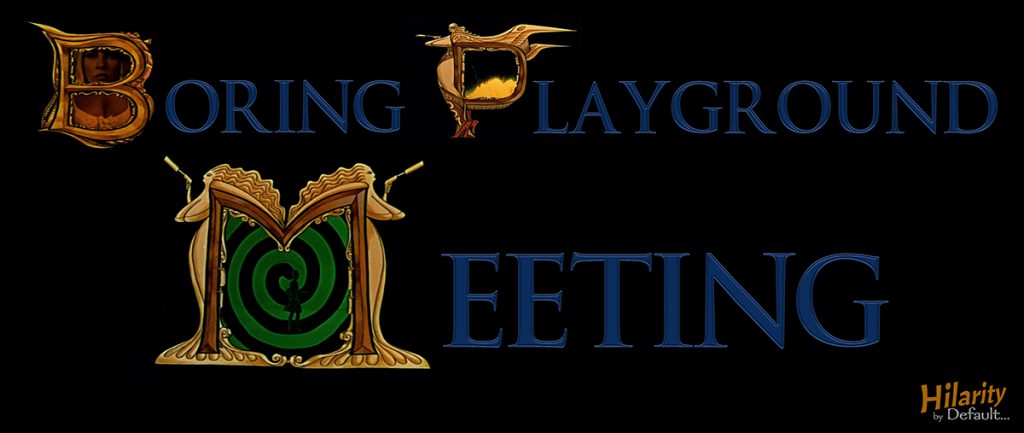
However, what follows is one of the most colorful and creative open credits from the decade. Perhaps the only effort from Royale to contend directly with the Bond series in terms of quality, the opening credits is a masterpiece of bizarre visuals (taken directly from the film), creative animation, and sexy caricatures. What really makes it work is the fantastic score by Burt Bacharach – perhaps one of the most underrated scores in cinema. Catchy, bouncy, and full of fun, Bacharach’s score alone almost justifies the very existence of Casino Royale. It’s that good.
As the credits end, we find M (John Huston) and three other heads of the international espionage community in the English countryside on their way to meet the one and only Sir James Bond (Niven). As they drive into Bond’s estate, their car is suddenly overrun by a pride of lions. Yes, lions. Why lions, you ask? Was it just an excuse for the Russian to say, “I did not come here to be devoured by symbols of monarchy!” If so, well done movie. Absurd and utterly pointless but worth it for that single pun. If only there had been a rabies epidemic that could have spared us from what was to follow.
We find Sir James has retired to a quiet, celibate lifestyle of gardening and ritual Debussy playing. Put off by the “sexual acrobat” that inherited his name and number (a not-too-subtle allusion to Sean Connery’s Bond), he wants no part in returning to a life of espionage, regardless of the international threat that has been depleting the world of its best spies. Considering modern undercover work to be an era of “joke shop spies,” he declines M’s pleas forcing M to literally blow up Bond’s estate. Naturally, this leads Bond to…accept the offer?! What the hell kind of logic is that? It’d be like Wal-Mart offering me a job, which I would decline, causing them to blow up my apartment. “Aw gee, that must be a serious offer guys! When do I start?” What the hell kind of incentive is that?

You would guess with this opening that the plot would center around an aging, old-fashioned, chaste James Bond finding himself as a fish-out-of-water in the sex-crazed modern day hi-jinks of the 60’s era 007 films. With this point of view, the film would naturally lead to many direct spoofs of the franchise as well as the Bond phenomenon as a whole. Unfortunately, Casino Royale is quite too clever for something that simple! Instead, we cut to Sir James visiting a Scottish castle overrun by nubile teenage assassin nymphs posing as M’s family. It seems that M died…somehow…and Bond is chivalrously returning his remains to his widow (Deborah Kerr), who is also secretly an assassin. What follows is a strange “traditional” funeral dance, an uncomfortable bath between the nearly 60 year-old Niven and a 17 year-old student of anatomy, a contest involving kilt-clad Scots and large stone balls (thankfully not a metaphor), and a deadly explosive pheasant hunt – and this is the most sedate portion of the film!
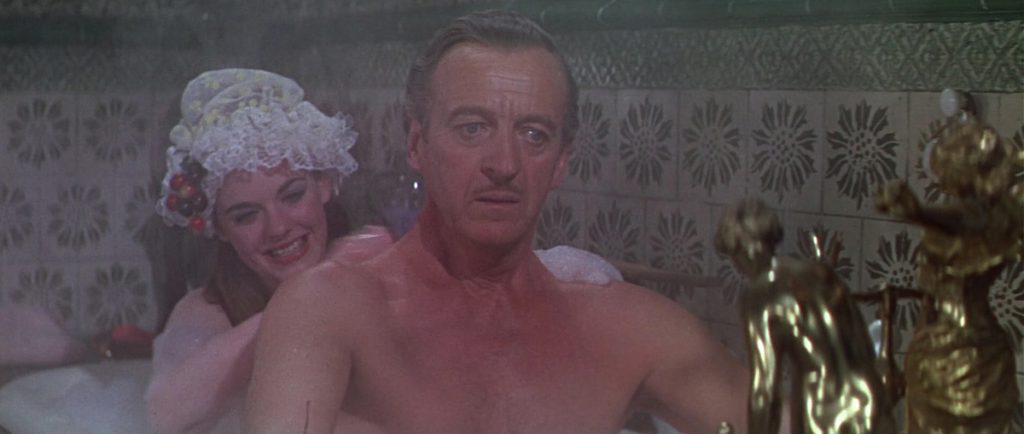
Moreover, it may be one the most effective sections of Royale. Niven’s confounded yet assured reactions to the absurdity of the situation leads to some of the film’s most hilarious witticisms and situational comedy. From the Pink Panther-esque Scottish contest to the pheasant hunt (a sequence that wouldn’t seem out of place in some of the Bond films that came after), there are some genuine laughs here – laughs that are quickly interrupted by a standard car chase involving a remote-controlled explosive milk truck. Don’t you hate it when that happens?
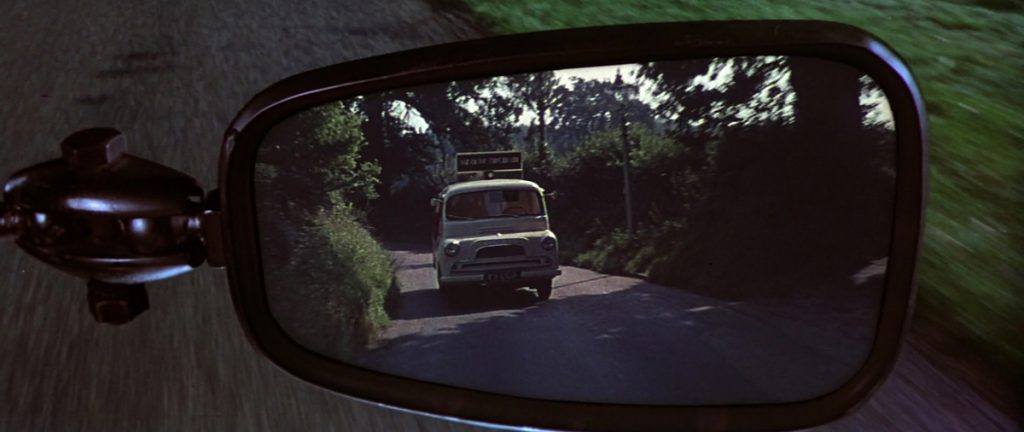
Jesus, by this point we’ve had explosive remote controlled pheasants and milk trucks! What the hell is next?

But I’m getting ahead of myself. Sir James arrives in London and settles himself in as the new head of MI6 where he concocts a ridiculous scheme to confuse and outmaneuver the enemy: rename all worldwide agents, male and female, as James Bond 007 whilst secretly training a Connery-wannabe (Terence Cooper) to be be an AFSD (Anti-Female Spy Device) – a man that all women want that doesn’t want women thus allowing him to beat up those devious femme fatales (his training sequence alone would inspire picket lines and protests in today’s era). This, of course, prompts me to ask why Sir James couldn’t save time and effort by employing a good looking gay man? Was Neil Patrick Harris not available to save the world (one suspects he always is)? Either way, in the demented narrative of Royale, the AFSD secret weapon naturally disappears for a majority of the film.
Assisting Sir James is the daughter of Moneypenny, Moneypenny (Barbara Bouchet), by far one of the most gorgeous delights in the film. She may not have much to do but she is absolutely breathtaking. Had Sean Connery walked into M’s office with this angelic creature around, he would have been court-martialed for misuse of government property!
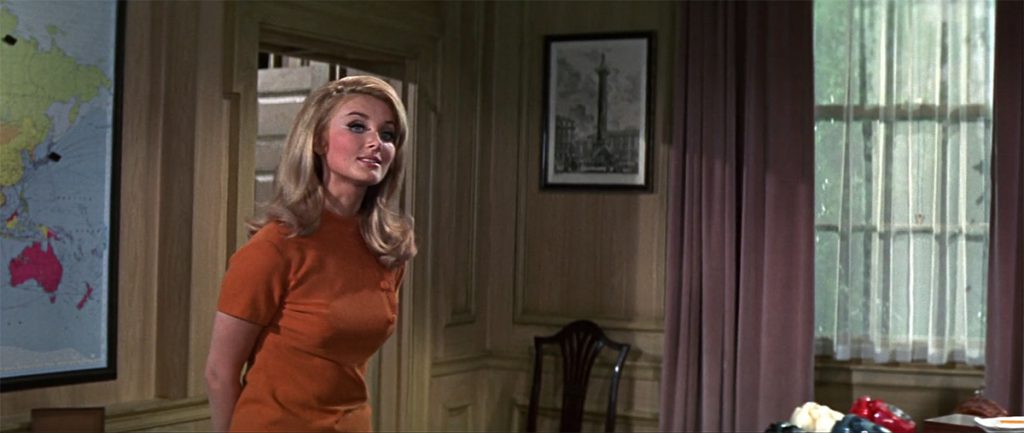
During this sequence, we also get an update on the whereabouts of Sir James’ bumbling nephew, Jimmy Bond (Woody Allen), who makes a short appearance in one of the single funniest scenes in the movie as he comically tries to escape a firing squad. Simple but brilliant – a sentiment that Casino Royale should have paid more attention to.
As if the plot wasn’t complicated enough, Sir James bribes Vesper Lynd (Andress), ex-spy millionairess with a penchant for wearing a peacock muster’s worth of feathers, to help him recruit baccarat expert Evelyn Tremble (Sellers) to take down the embezzling Le Chiffre (Orson Welles). As she seduces Tremble to the tune of the Dusty Springfield classic “The Look of Love,” slow motion shenanigans ensue including a bed bouncing feather dance, motionless fish aquariums, and Lord Nelson statue admiration.
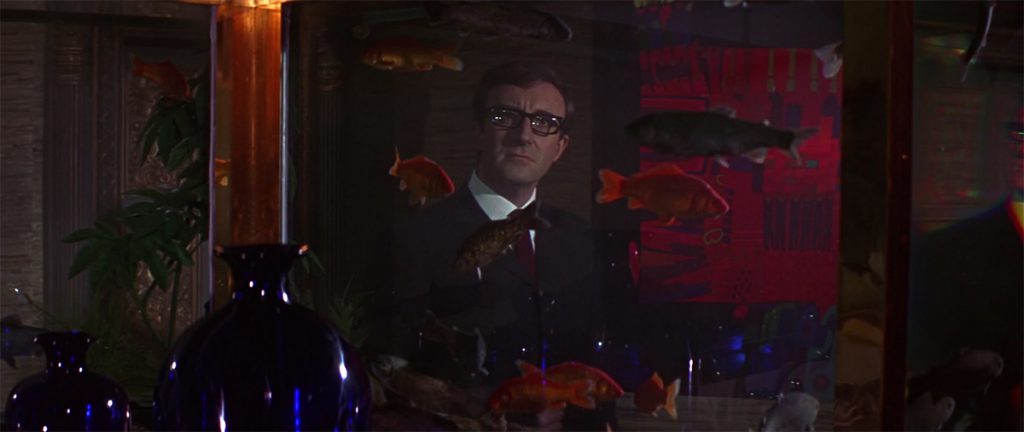
Regardless of the behind-the-scenes issues, it is clearly evident that the Peter Sellers sections of Casino Royale were the earliest produced. Whenever we switch back to his story, it feels like we’re being dropped into a different film entirely, with its own separate tone and atmosphere. Notably, it’s a quasi-faithful adaptation of the actual Ian Fleming plot with its betrayals, torture scenes, and casino showdown more or less intact. Had Sellers not left production, it would have been interesting to see how it played out, especially considering that he performs the role atypically dry. Yes, the actor best known for colorful, over-the-top character creations such as Inspector Clouseau and Dr. Strangelove plays it mostly straight in a film that features homicidal milk trucks. Go figure.
By mostly straight, I refer to one scene in particular that gives Sellers a chance to show off his impersonation skills when he and Vesper play dress up. These include: a gay sailor enthusiast (like I said, mostly straight), Napoleon Bonaparte, and…
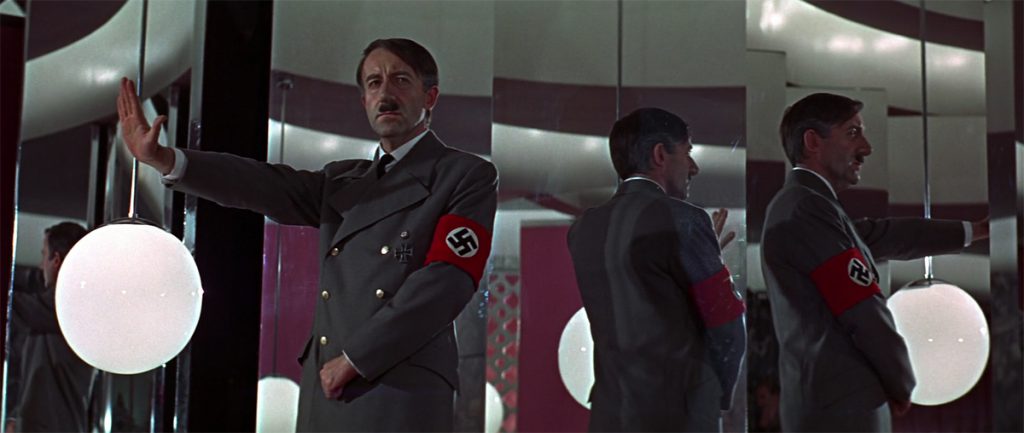
After Vesper convinces Sellers to take on the mantle of James Bond 007, we get one of the few scenes that genuinely satirizes the official Bond series – the Q-branch gadget tour, which includes a not-too-stealthy midget in an elf costume, a two-way video watch, and a poison pen letter joke that, oddly, would be ripped-off later in Octopussy!
As this is going on, Sir James ventures to Asia to find his illegitimate daughter with Mata Hari, Mata Bond (Joanna Pettet), where she treats him to a lush, exotic dance sequence that looks like it was lifted from an incompetent, diabolical remake of The King and I. I’ve never had such overwhelming questions without a desire for any answers. Still, it leads to one of my favorite over-emphasized line deliveries of all time as Niven embraces his daughter and exclaims, “My child!” Seriously, just listen to this!
I dare anyone to use that line in everyday life. Go to a school and yell it out to your kid or when you first hold your baby in the delivery room. Even better, when your girlfriend is introducing you to her parents, just call her over to the couch bellowing, “My child!” It’ll change your life.
After bizarrely hitting on her father (“my child!” indeed), she receives her mission: infiltrate a Gothic East Berlin au pair studio being used as a front for an international blackmail ring. This section of the film, though ridiculous, is an abstract curiosity. From the set design to the eerie use of music and framing, it is a relative hypnotic mix of German expressionism and 1960’s tackiness. Clad in a belly-dancing outfit that would make Princess Leia’s slave bikini seem modest by comparison, Mata’s technicolor wardrobe just pops against the striking monochrome tinge of the sequence.
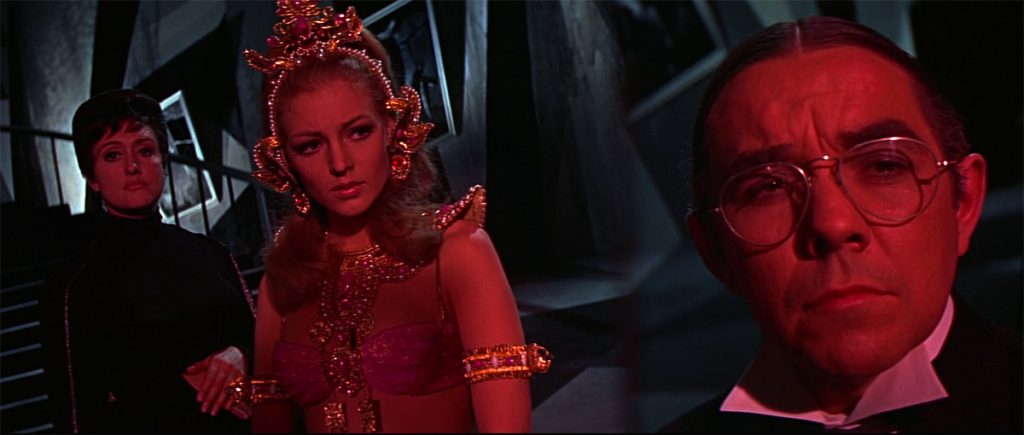
Her endeavor leads her to discover Le Chiffre’s connection to the broken shatters of an already convoluted story line. This despite the fact that Sir James has, at this point, already recruited Vesper Lynd and Evelyn Tremble to take him down. Either this sequence is shown out of order (perhaps to get the top-billed Sellers to appear earlier in the film) or Sir James is a prophet of Nostradamic proportions!
Thus we return to Tremble as he, Vesper, and Mathis (returning from that vigorous frenzy of a pre-titles sequence) ready themselves to face off with Le Chiffre at Casino Royale – but not before taking a sensuous journey through a car wash run by leather clad floozies.
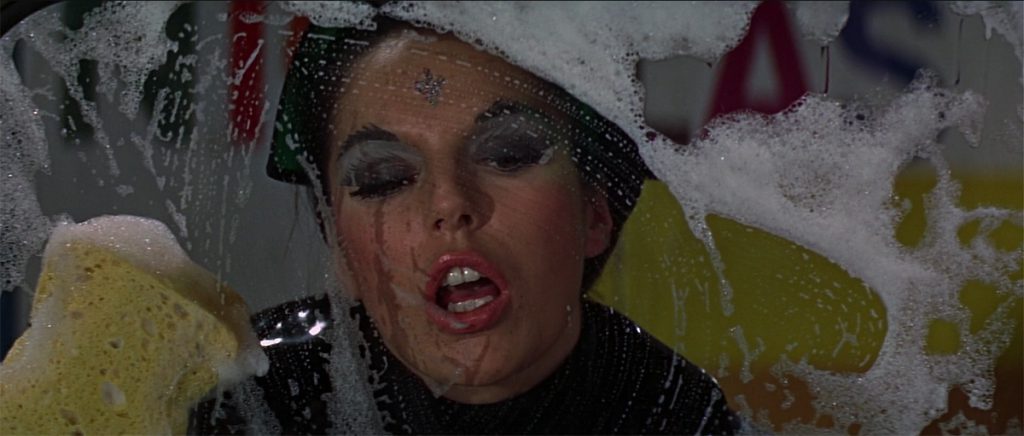
After a dalliance with the appropriately named Miss Goodthighs (Jacqueline Bisset) and an obligatory dream sequence (which probably only serves as an excuse to use as much leftover Sellers footage as possible), Tremble beats the cheating, magic-trick loving LeChiffre at the card table by having Vesper steal his X-ray glasses. Defeated, LeChiffre kidnaps Vesper and tortures Tremble in a dungeon of psychotropic terror which produces visions of scantily clad beauties, flashing shapes, colors, & amorphous body parts, and a Scottish army marching on a cloud. Future night terrors aside, the scene is at least inventive and intriguingly shot even if it does resemble the paramedic emergency of an LSD overdose.

The torture reaches its apex when Peter O’Toole (!) suddenly shows up to pull on Peter Sellers’ codpiece and Vesper somehow escapes so that she can machine gun everyone to death, including Sellers! This in itself is such a cruel, grim turn for the up-to-now lighthearted picture that it leaves a distinct bitter taste to the rest of the already asinine production.
How does Casino Royale continue after killing off its big star? By having a UFO land in the middle of London and kidnapping a suddenly short-haired Mata Bond!
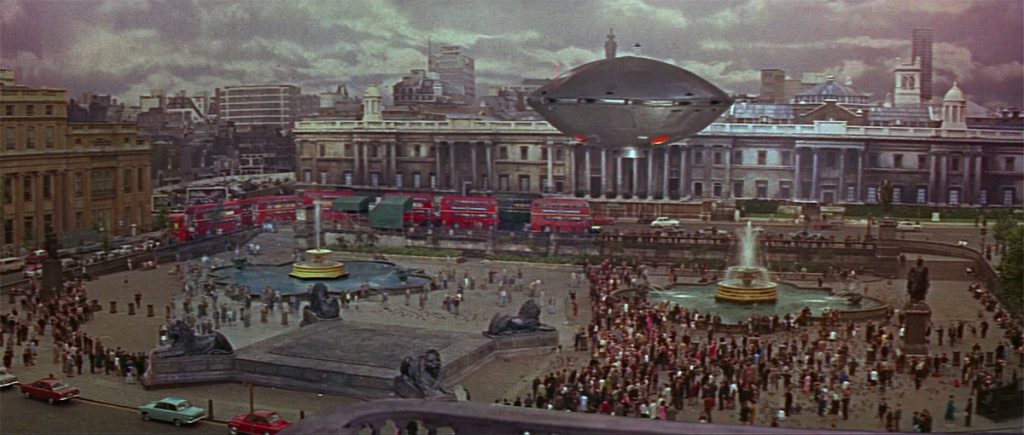
Sir James and Moneypenny pursue the UFO and Mata Bond to, surprise surprise, Casino Royale where she’s being held prisoner by the evil Dr. Noah, an evil genius bent on replacing the world’s leaders with robots and wiping out everyone shorter than himself – naturally, he is revealed to be none other than Woody Allen (probably the one thing in this whole film that makes sense). After capturing Sir James, Dr. Noah is soon tricked by a naked Daliah Lavi into swallowing an explosive capsule and a madcap escape ensues.
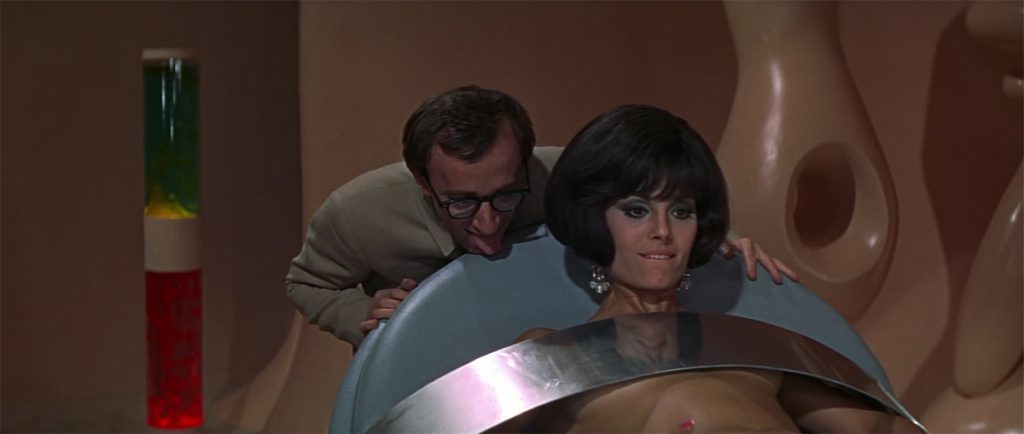
You know what? Madcap is an understatement as is “over-the-top” and all its synonyms. What follows is an overblown, over-exaggerated deluge into the excess of cinematic overkill as cowboys, toupeed monkeys, Native American warriors…
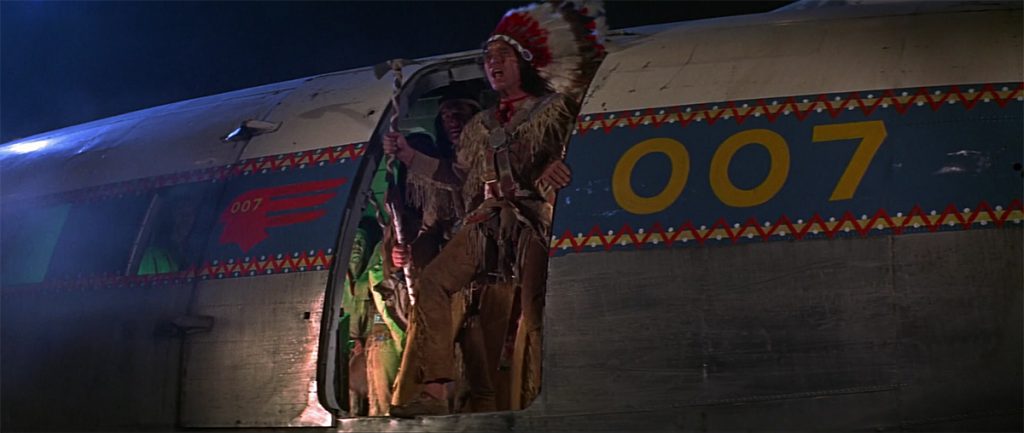
…naked screaming golden girls (another rare Bond series allusion), the Keystone cops, 007 tagged trained seals, and more all descend into one last frenzied battle. And then they all killed in a fiery explosion of death. The end??
Final Thoughts |
If someone were to ask what was wrong with Casino Royale, a one minute clip from the ending would provide ample evidence. I mean, what do you say about a film that has the best of everything – fantastic production design, incredible music, and the largest assortment of A-list stars outside of a Roman-era epic – and just utterly squanders it all in an incomprehensible plethora of pure refuse?
What is most aggravating about Royale is that there is so much to like, if not love, about the picture. The cast is stellar and professional to the end. There’s not even a subtle hint of a sarcastic eye roll within the performances and given the material they had to work with, they all deserve the highest of accolades – especially David Niven who almost single-handedly manages to keep a fingertip grip onto the fragile scraps of what resembles a motion picture.
Besides the top-billed cast, there is an almost appalling mass of famous actors and actresses in the film including William Holden, Charles Boyer, George Raft, Jean-Paul Belmondo, and Geraldine Chaplin, plus early roles for Caroline Munro, David Prowse (in his screen debut as Frankenstein’s monster a full decade before he played Darth Vader in Star Wars), and Anjelica Huston‘s first introduction to film work – all to fill the vacancy that was left by Peter Sellers’ abrupt departure from the project. Furthermore, I can think of fewer films that have had such an arresting number of onscreen beauties. If there ever was a Miss Universe pageant for film casts, Casino Royale would be a defining champion.
So is Casino Royale a bad film? Yes. Is it worth watching? Definitely – there’s nothing quite like it out there, at least not up to its scale or caliber. Its influence stretches to today with films such as Mike Meyers’ successful Austin Powers series containing much of Royale‘s signature imprints right down to its fembots. Its signature song, “The Look of Love,” is a jazz staple and earned a well-deserved Oscar nomination (though it was robbed by the markedly inferior “Talk to the Animals” from Doctor Dolittle). Moreover, Casino Royale can be genuinely fun and clever, frequently showing signs of inventiveness tragically stifled by a labored production and suffocating excess used to mask its gaping cracks.
Random Afterthoughts… |
Although Casino Royale has very few direct parodies of the official James Bond series, there are a few nuggets here and there serving more as reference than satire. Case in point, Honey Ryder’s famous bikini from Dr. No has a cameo…
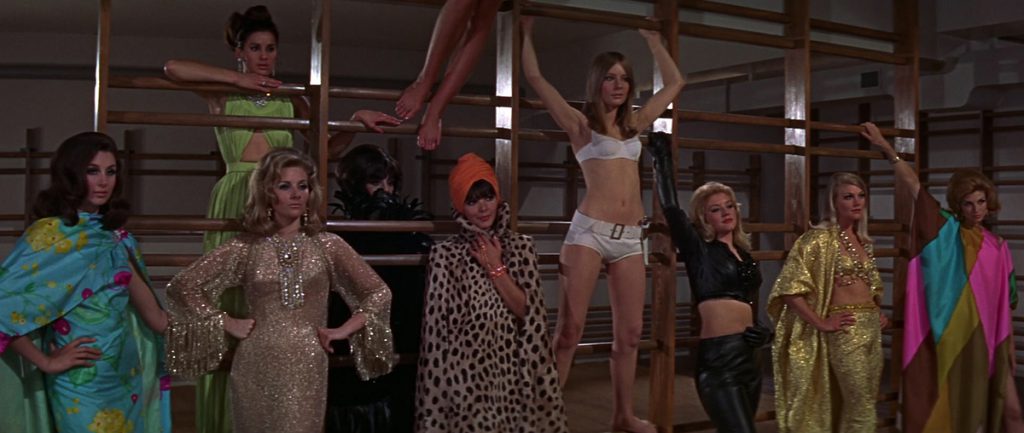
This movie may have also inadvertently started the popular film theory of the James Bond codename two years prior to Connery being recast! Its premise is as such: that the name and number of James Bond 007 is passed on from agent to agent thus explaining Bond’s different appearance, mentality, and continued youth throughout decades of service. Although it’s an idea that I don’t happen to ascribe to, that’s exactly what kicks off the “plot” of Casino Royale.
I swear that the writers of 1999’s The World is Not Enough, Pierce Brosnan‘s third foray as 007, were secretly fans of this film. From the bagpipe machine gun in a Scottish castle (which also includes a similar “pay the piper” joke) to the X-ray glasses in a casino to the two-faced love interest!
James Bond will Return
in
You Only Live Twice (1967)
Join 007 on the 7th of next month! For more, click here.












